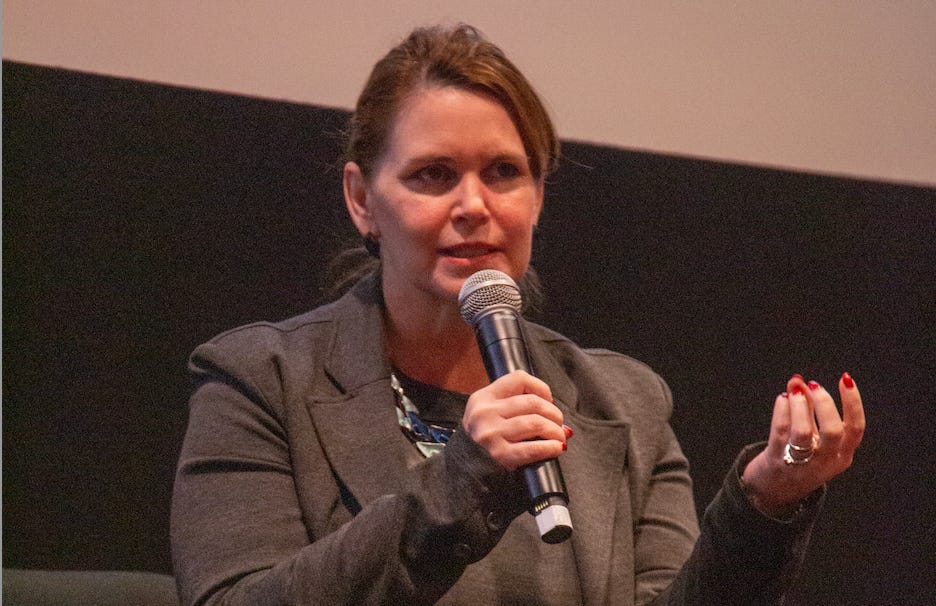The human in the machine: Understanding context, creativity and collaboration in AI
Prof Heather Horst's keynote address to our 2023 symposium
Prof Heather Horst (ADM+S Centre and Western Sydney University), a leading social anthropologist of technology, delivered the keynote address titled ‘The Human in the Machine: Understanding Context, Creativity, and Collaboration in AI Futures’ at the UTS Data and AI Ethics cluster’s symposium on 28 July 2023.
In her remarks, Prof Horst noted that we can build on the important work done by scholars of data colonialism and the political economy of automated decision-making (ADM) by “situating technical innovations, both geographically and within networks of funding, investment and profit, including national and international patterns of investment in research and design”.
She outlined that her work examining such contexts across six regions has shown that “a more complex and nuanced picture” is emerging. “Our initial mapping of the geographical location of research labs of large tech firms demonstrates the highly uneven way that ADM systems travel across the globe. Most of the infrastructure investments and jobs in the digital economy are siloed in five countries in Africa, while funding for research and development in the global south is clustered in areas such as Beijing and Shenzhen in China. Microsoft, IBM and Apple are operating in India, Bangalore and Hyderabad.”
She noted that these patterns are partly shaped by corporate strategy. “Google seems to use its AI research labs explicitly to fund what it calls ‘socially responsible’ AI projects in places like India and Africa. Google’s strategy ensures that the company's platform is insinuated into a range of projects across the world, as ‘AI for good’ initiatives funded by their labs, which tend to rely on Google-owned digital infrastructures. Here global talent has been captured by hitching development and aid initiatives to proprietary infrastructures.
“By contrast, Apple’s investments globally tend to operate as part of a strategy of vertical integration, with centres in China and Latin America, helping to shore up the company’s manufacturing supply chains. Amazon has basically abstained from creating global research labs despite the wide distribution of its digital infrastructure such as Amazon Web Services.”
Horst also highlighted the role of national industrial strategies and narratives in determining the contexts in which ADM technologies develop. “In China and several southeast Asian countries, state-level planning and strategy documents frame ADM technologies as enabling the nation to harness the power of the digital economy – a promise promoted by international organisations such as the World Bank, and captured in the titles of state-led initiatives to create a ‘Digital India or ‘Digital Bangladesh’. There is a dominant narrative in places like Vietnam, Thailand and Cambodia that these technologies will allow the country to leap over developmental stages, and become an economy based on innovation – somewhat repeating earlier narratives surrounding mobile phones.” She added that there are significant differences in the ways countries position themselves with respect to the digital economy.
Discussing the “creativity” context of ADM technologies, Horst described her recent work with collaborators on algorithmic recommendation systems in the fashion industry, examining the Amazon consumer product, Amazon Echo Look, and the different effects of its normative judgments in North America and the Caribbean. “Taking a device like the Echo Look out of the US context, which is where Amazon designed this product to be used, and into the closets of women in Trinidad and Tobago, highlights the complexities of moving algorithmic and technologies to different populations and different cultural contexts.” The product encoded dominant US-based views on appearance, “elevating already powerful voices”.
Issues of inherent bias and the reproduction of structural inequality are starting to be discussed in the global fashion and design industries, Horst noted, adding that “we need to understand the relationship between feedback to designers and others at particular points in time, and the lifecycle of the algorithm and automation processes” to address these issues.
Moving to her final theme, “collaboration contexts”, Horst highlighted the significance of recent research showing that people use ADM technologies “in unexpected and innovative ways – with equally unanticipated social consequences, which play out differently in different places”.
Understanding these processes of appropriation and improvisation is crucial, “because the future of AI depends on creating new collaborative relationships between its subjects, users, designers, regulators and others,” she said. “Trust is a central problem. In human and computer interaction research and design, an assumption often arises that public trust can simply be designed into services and products. However, social scientists have demonstrated that this rarely happens. New models for conceptualising trust are really necessary for understanding the uses of ADM.”
Horst concluded by noting that society is a pivotal moment regarding the future of ADM technologies. “As humanities and social science scholars, we need to account for context, develop new forms of collaboration, and consider some of the basic tenets of understanding what it is to be human, including things like imagination and creativity – both in the big innovations as well as in the small acts of creativity, such as getting dressed. We need to understand the political economy of these developments, but also the agency that people in these systems actually employ and affect. We need to understand the diverse goals, trajectories and aspirations of ADM as they unfold in practice.”
Summary by Emma Clancy.



